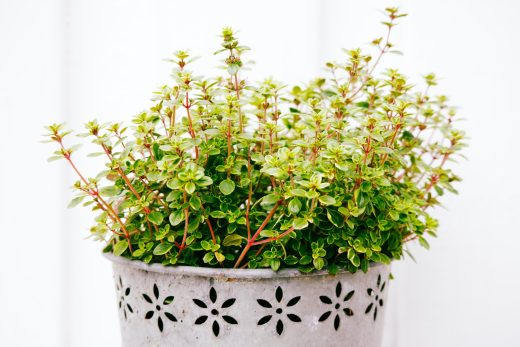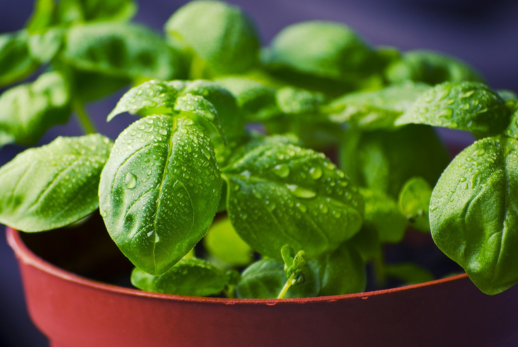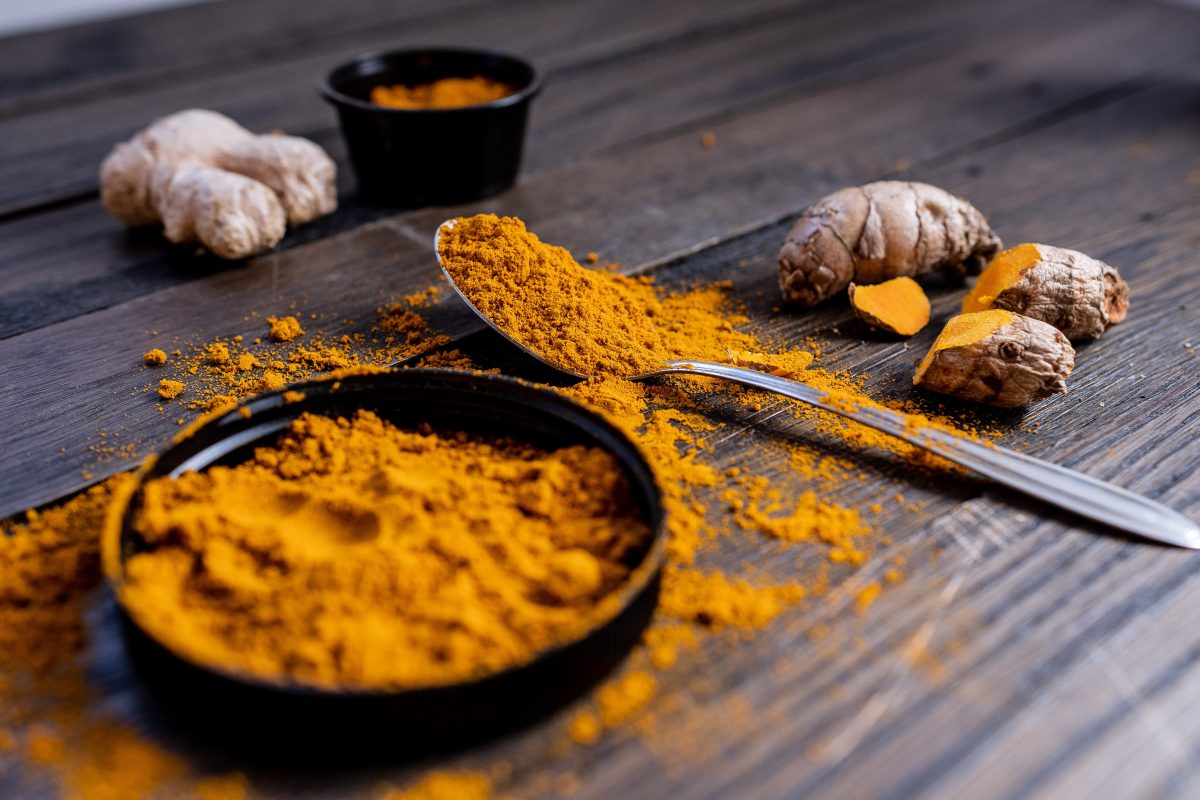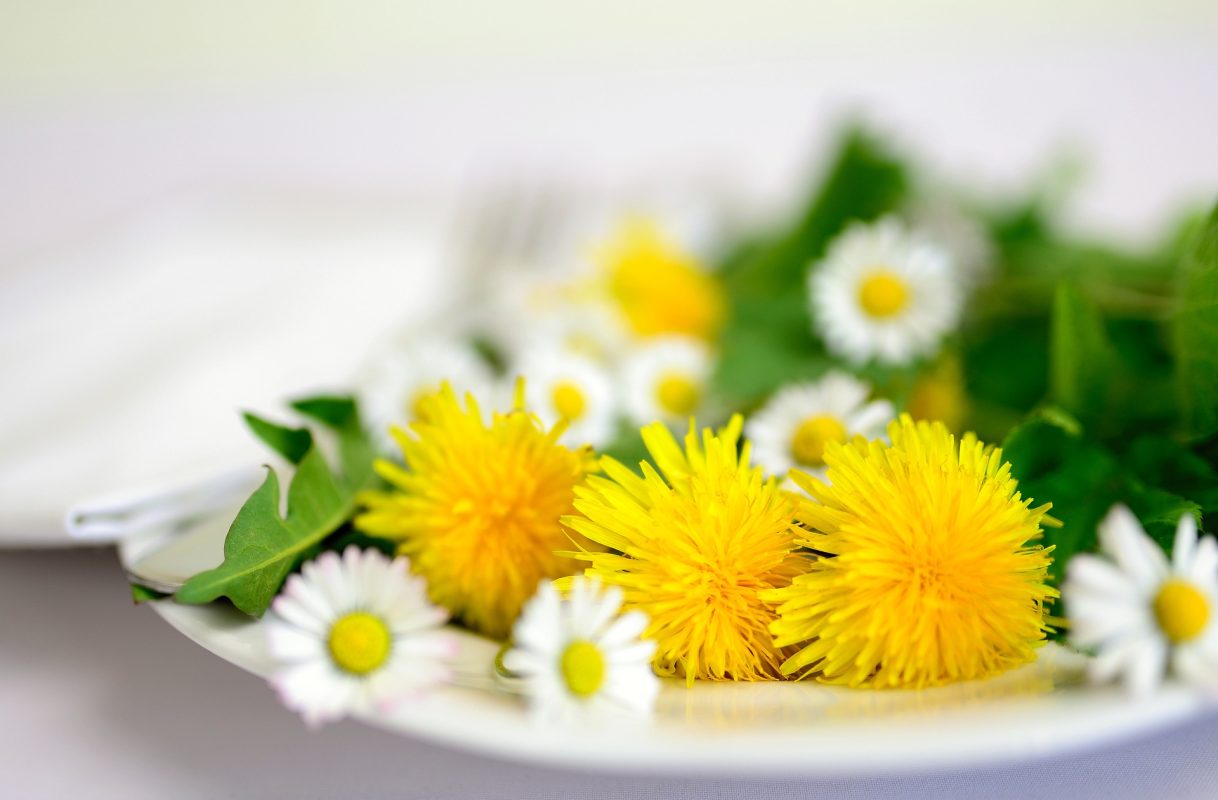“Parsley, sage, rosemary, and thyme…” there’s good reason that thyme is listed in this old folk tune, Scarborough Fair. Thyme is one of the most versatile herbs in your garden. It can be used as a flavoring, medicine, and essential oil.
Thyme is a perennial herb that can grow to be up to 2 feet tall. It has small, fragrant blue or pink flowers that bloom in the summer months. The leaves are used in cooking and have an intense flavor that’s like oregano and mint.
Thyme is known for its antiseptic qualities, which make it great for fighting off germs and infections. In fact, thyme has been used since ancient times as an antibacterial agent and even today is used to treat coughs, colds, sore throats, and digestive problems such as diarrhea or nausea caused by motion sickness or pregnancy.
Grow this important and versatile herb in your garden or window box with ease by following this extensive guide.
A Historically Important Herb For Your Garden
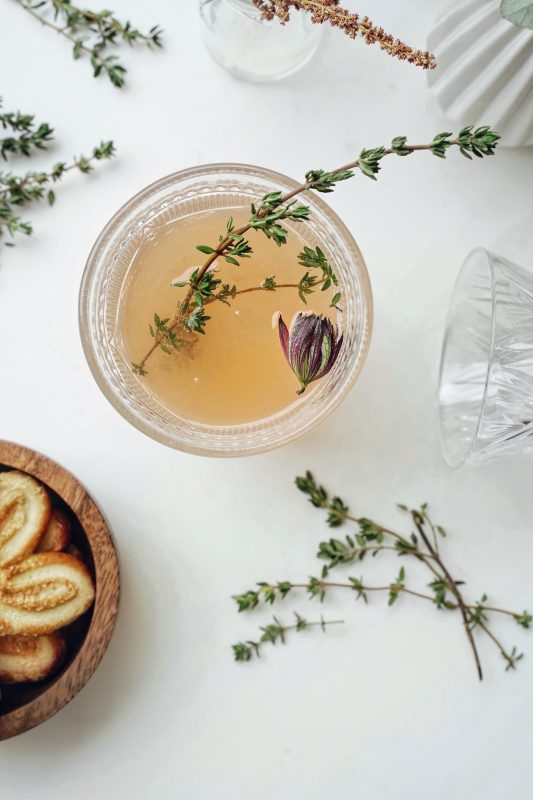
Thyme is an herb that’s been used for thousands of years. It has been used as an important ingredient in many cultures, and its medicinal use dates back to ancient Egypt. Thyme was part of the mummification process and used as a pain reliever.
The Romans believed that eating thyme either before their meal or with their food would protect them from most poisons. Their soldiers would even eat thyme before heading into battle for luck.
It was a common medicine used during the Black Plague and by Victorian Era nurses for dressing wounds.
Thyme is used today as a flavoring agent in cooking, but it is also an important ingredient in herbal remedies.
The flavor of thyme can vary depending on the type you choose to grow–you may want to try several different kinds before deciding which one you like best!
Planting
Thyme is a perennial herb that can be grown in both the ground and containers. It’s best to plant thyme in full sun, but it will tolerate partial shade. Thyme grows best in well-drained soil, so if you have sandy or clay soil, amend it with compost or other organic matter before planting.
Thyme should be planted in spring or fall–not during the hottest part of the summer–so that its roots have time to establish themselves before winter sets in. If you live where winters are mild enough for outdoor growing, plant your thyme seedlings outdoors about 6 inches apart so they can spread out as they grow (and don’t forget to mulch!). For colder climates where it might not survive through winter without protection from freezing temperatures (and possibly snow), consider growing your own indoor container garden instead!
Thyme doesn’t require a lot of soil amendments to thrive. This hardy plant doesn’t need more than a little compost in the early spring.
It’s Not Hard To Start Thyme From A Seed
Thyme is easy to grow from seeds, so it’s a great option if you’re looking for an herb garden starter kit! Growing thyme from seeds isn’t hard, but it’s a slow process. Thyme seeds grow slowly, and most people will need to start them inside well ahead of their growing season.
You might find it easier and less work to buy an established plant from your local garden center or ask a friend for a cutting. Cuttings can be planted inside 6 to 10 weeks before your growing season and you’ll have thriving plants all ready to go when it warms up.
Spacing
Thyme plants need some space. You’ll want to plant your young plants 1 to 2 feet apart despite their short stature around 6 to 12 inches.
Companion Plants
In the garden, consider planting your thyme near your cabbage or tomatoes. These are great companion plants that do well near each other. The thyme can help keep away pests and enhance the flavor of these vegetables.
If you’re planting thyme in a container garden, consider planting it with rosemary. Rosemary has a wonderful scent and similar care needs.
Growing
- Do not overwater your thyme. You only need to water these plants when the soil becomes completely dry.
- Thyme can get quite bushy. To help contain the growth and keep the plant healthy and strong you’re going to want to prune them back in the spring and summer.
- If you live in an area with cold winters, you’ll want to mulch around the base of your plants after the ground freezes.
- Once your plants mature to around 3 or 4 years old it’s time to divide them. Older plants will get very woody. The woody stems are hardier but also make for less flavorful leaves.
- Take cuttings of your favorite plants and start some indoor pots in your kitchen.
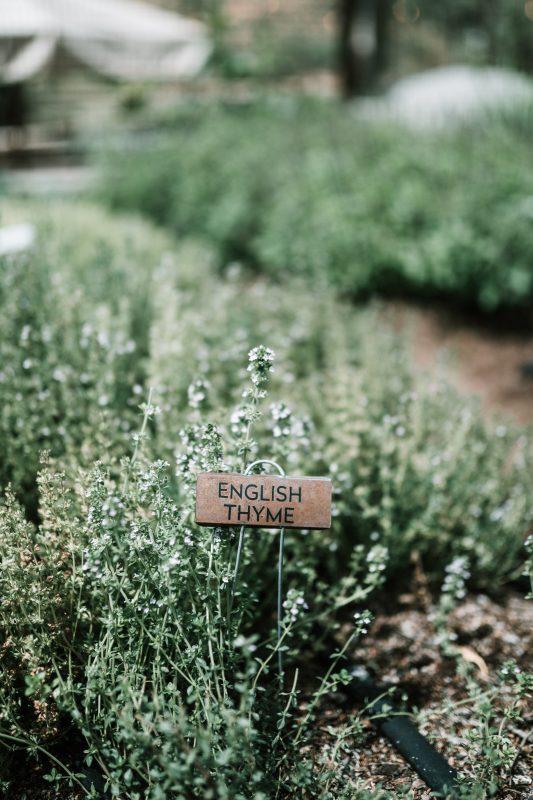
Thyme Can Be Grown Inside Or Outdoors In Many Places
Thyme is a hardy herb that can be grown inside or outdoors in many places. It grows well in containers and makes an excellent choice for beginners. Thyme can also be planted as an annual, perennial, or biennial plant depending on your climate, but it will die back during winter months if grown outside in colder regions.
If you already have thyme plants in your outdoor garden, take some cuttings to begin some indoor pots. To take a cutting, trim a 3-inch section from the tip of a green stem. Apply some rooting hormone (found at your local garden center) on the cut portion of that stem you trimmed off. You then place the cut end into sterile sand or vermiculite. It takes about 6 weeks, but your stem will grow roots.
Harvesting

Harvesting thyme is a simple process. If you left the herb to grow naturally, it will produce flowers and seeds. You can harvest these at any time during the growing season, but once they start to dry up or brown off, it’s best not to pick them.
The best time to harvest your thyme is just before the plant starts to flower. Harvest the softer tops to the branches and leave the woody parts behind. You can usually get two crops of thyme, per plant, during the average growing season.
Your fresh thyme should be stored in the fridge and will last a week or two. You can also dry it for longer storage.
Conclusion
Thyme is a great herb to grow in your garden, and it’s not hard to do. This easy herb has been gracing gardens for centuries due to its incredible usefulness.
Whether you live in a zone that isn’t too cold for thyme (up to zone 5 for most varieties) or grow it on your favorite windowsill, you won’t be disappointed by the aromas and flavors of this wonderful herb.

